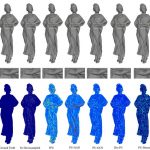This project aims to translate streams of data from individual sensors into a shared manifold-space for joint understanding and processing. This work includes an investigation of computational topology and contrastive learning for manifold learning.
F6-M Adaptive Manifold Learning for Multi-Sensor Translation and Fusion given Missing Data






